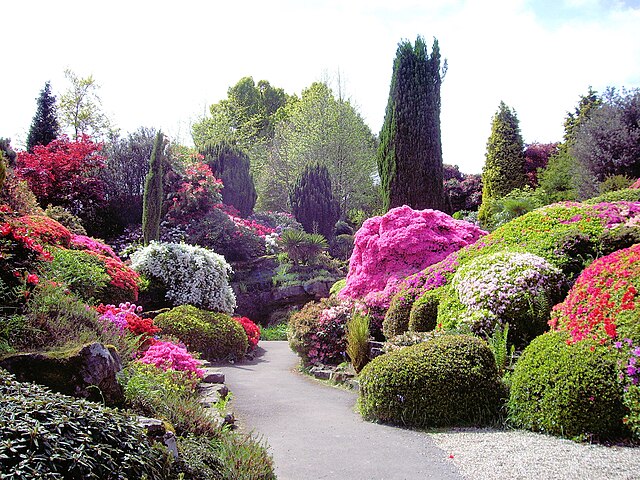Horticulture is the science, technology, art, and business of cultivating and using plants to improve human life. Horticulturists and Horticultural Scientists create global solutions for safe, sustainable, nutritious food and healthy, restorative, and beautiful environments. This definition is seen in its etymology, which is derived from the Latin words hortus, which means "garden" and cultura which means "to cultivate". There are various divisions of horticulture because plants are grown for a variety of purposes. These divisions include, but are not limited to: gardening, plant production/propagation, arboriculture, landscaping, floriculture and turf maintenance. For each of these, there are various professions, aspects, tools used and associated challenges; Each requiring highly specialized skills and knowledge of the horticulturist.
A horticulture student tending to plants in a garden in Lawrenceville, Georgia, March 2015
The Rock Garden, Leonardslee Gardens
Flower seedlings at a market in Breda, Netherlands
Gardening is the process of growing plants for their vegetables, fruits, flowers, herbs, and appearances within a designated space. Gardens fulfill a wide assortment of purposes, notably the production of aesthetically pleasing areas, medicines, cosmetics, dyes, foods, poisons, wildlife habitats, and saleable goods. People often partake in gardening for its therapeutic, health, educational, cultural, philosophical, environmental, and religious benefits.
A gardener maintaining topiary in Tulcán, Ecuador
Berms of fava beans have been planted at Hayes Valley Farm, a community-built farm on the former Central freeway ramps of San Francisco
From the Drake manuscript, this is a drawing done by an anonymous Frenchman in the 16th century. It shows an Indigenous garden planted with papaya, pineapple, maize, beans, and cucurbits.
Robert Hart's forest garden in Shropshire, England







